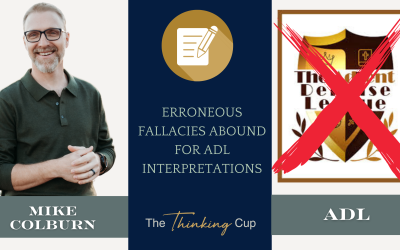Decoding Adventist Interpretation vs. Historical Context
In the realm of Christian eschatology, few passages have sparked as much debate and divergent interpretation as the Three Angels’ Messages found in Revelation 14:6-12. This cryptic series of proclamations has become a cornerstone of Seventh-day Adventist (SDA) doctrine, shaping their understanding of end-time events and their identity and role in God’s plan for humanity. However, as we delve deeper into this topic, we find a complex tapestry of interpretation, historical context, and theological implications extending far beyond Adventism’s boundaries.
Introduction to the Three Angels’ Messages
The Three Angels’ Messages, as they are commonly known, appear in the Book of Revelation, the last book of the New Testament. This apocalyptic text, attributed to John the Apostle, has been a source of fascination and controversy since its inception. The messages, delivered by three angelic beings, are presented as urgent warnings to the inhabitants of Earth in the context of impending divine judgment.
The first angel proclaims an “eternal gospel” and calls for worship of the Creator.
“Then I saw another angel flying directly overhead, with an eternal gospel to proclaim to those who dwell on earth, to every nation and tribe and language and people. And he said with a loud voice, “Fear God and give him glory, because the hour of his judgment has come, and worship him who made heaven and earth, the sea and the springs of water.”” (Revelation 14:6–7, ESV)
The second angel announces the fall of “Babylon the Great.”
“Another angel, a second, followed, saying, “Fallen, fallen is Babylon the great, she who made all nations drink the wine of the passion of her sexual immorality.”” (Revelation 14:8, ESV)
The third angel warns against worshiping the beast and its image, threatening divine wrath upon those who do so.
“And another angel, a third, followed them, saying with a loud voice, “If anyone worships the beast and its image and receives a mark on his forehead or on his hand, he also will drink the wine of God’s wrath, poured full strength into the cup of his anger, and he will be tormented with fire and sulfur in the presence of the holy angels and in the presence of the Lamb. And the smoke of their torment goes up forever and ever, and they have no rest, day or night, these worshipers of the beast and its image, and whoever receives the mark of its name.”” (Revelation 14:9–11, ESV)
These messages, laden with Old Testament symbolic language and apocalyptic imagery, have been subject to numerous interpretations throughout Christian history.
Adventist Interpretation Breakdown
The Seventh-day Adventist Church, born out of the Millerite movement of the 19th century, has placed the Three Angels’ Messages at the heart of its mission and identity.
Ellen G. White wrote on April 15th, 1912, three years before she passed:
“In a special sense Seventh-day Adventists have been set in the world as watchmen and light-bearers. To them has been entrusted the last warning for a perishing world. On them is shining wonderful light from the Word of God. They have been given a work of most solemn import,—the proclamation of the first, second, and third angel’s messages. There is no other work of so great importance.” [1]
In the Adventist worldview, these messages are seen as a divine mandate for the end-time church, a call to prepare the world for Christ’s second coming. These Three Angels Messages have woven themselves into the fabric of the working policy of the General Conference:
“The mission of the Seventh-day Adventist Church is to make disciples of all people, communicating the everlasting gospel in the context of the three angels’ messages of Revelation 14:6-12, leading them to accept Jesus as personal Saviour and unite with His remnant Church, discipling them to serve Him as Lord and preparing them for His soon return.” [2]/[3]
According to Adventist interpretation, the first angel’s message represents the proclamation of the “everlasting gospel” in the context of the investigative judgment, a unique Adventist doctrine that posits a pre-advent judgment of believers. This message is also seen as a call to return to true worship, including the observance of the seventh-day Sabbath. To keep it simple, this message (for an Adventist) is understood, in today’s context, as a call for ALL HUMANITY to convert and become an Adventist, the only denomination that ‘keeps the commandments’ and has ‘the spirit of Prophecy.’ (a.k.a. Ellen G. White)
Ellen White states:
“The first angel’s message of Revelation 14, announcing the hour of God’s Judgment, and calling upon men to fear and worship him, was designed to separate the professed people of God from the corrupting influences of the world, and to arouse them to see their true condition of worldliness and backsliding.” [4]
Notice that in this quote, Ellen clearly puts the first angel’s message in the past by using the word ‘was.’ In her understanding, the first angel’s message was directly linked to an event that had already occurred. She clearly confirms this in a statement from Evangelism:
“…the message of the first angel went with great power in 1842 and 1843, and now the time has come when the message of the third angel is to be proclaimed extensively in the East.” [5]
This message in 1842 and 1843 was the ‘special’ message that fulfills their understanding in the Adventist framework. It is important to note that this time period was a couple years prior to the Great Disappointment of 1844, where the entire early Advent movement was deceived into thinking Jesus was coming again. This false teaching of the years prior to this Great Disappointment is understood as the unique message of the first angel’s message.
The second angel’s message is understood as a denunciation of apostate Christianity, mainly aimed at the Roman Catholic Church and Protestant denominations that have departed from ‘biblical truth’ in the Adventist view. “Babylon” is interpreted as a symbol of false religious systems.
Ellen White again makes this abundantly clear in her famous (or infamous depending on your view) book Great Controversy:
“The second angel’s message of Revelation 14, was first preached in the summer of 1844, and it then had a more direct application to the churches of the United States, where the warning of the Judgment had been most widely proclaimed and most generally rejected, and where the declension in the churches had been most rapid. But the message of the second angel did not reach its complete fulfillment in 1844.” [6]
It feels redundant to point out, but notice that in her interpretation (and thus the understanding of the Adventist Church), the second angel’s message was fulfilled entirely in 1844. Again, tied to the Great Disappointment. This understanding is a horrible out-of-context narcigetical [7] interpretation of the text. I discuss this in part 3 of a context series written on the Thinking Cup blog: I’m Right, Your Right, Who’s Right? (Part 3)
The third angel’s message is viewed as a stark warning against accepting the “mark of the beast,” which Adventists typically identify as Sunday worship enforced by law, in contrast to seventh-day Sabbath observance. In their view, when the national Sunday law is enforced, anyone who chooses to worship God on Sunday will receive the ‘mark of the beast’ and, therefore, be lost.
Again, Ellen White is crystal clear on this topic:
“The light we have received upon the third angel’s message is the true light. The mark of the beast is exactly what it has been proclaimed to be. Not all in regard to this matter is yet understood, nor will it be understood until the unrolling of the scroll; but a most solemn work is to be accomplished in our world.” [8]
She further clarifies what the ‘mark of the beast’ is in contrast to her interpretation of the ‘seal of God’:
“The sign, or seal, of God is revealed in the observance of the seventh-day Sabbath, the Lord’s memorial of creation. “The Lord spake unto Moses, saying, Speak thou also unto the children of Israel, saying, Verily My Sabbaths ye shall keep: for it is a sign between Me and you throughout your generations; that ye may know that I am the Lord that doth sanctify you.” Exodus 31:12, 13. Here the Sabbath is clearly designated as a sign between God and His people.
The mark of the beast is the opposite of this—the observance of the first day of the week. This mark distinguishes those who acknowledge the supremacy of the papal authority from those who acknowledge the authority of God.” [9]
In Adventist theology, the three angels’ messages of Revelation 14 serve as a final warning to humanity. The first angel’s message proclaims the everlasting gospel in the context of the investigative judgment, calling people to worship God by keeping the seventh-day Sabbath and ultimately urging all to join the Adventist faith. The second angel’s message denounces apostate Christianity, specifically the Roman Catholic Church and Protestant churches that have strayed from biblical truth, identifying them collectively as Babylon—a fallen religious system. [10] The third angel’s message warns against accepting the mark of the beast, which Adventists define as Sunday worship enforced by law; they believe that when a national Sunday law is enacted, those who comply will be lost. These messages are seen as a progressive call to separate from false religion and align with the commandment-keeping remnant, as represented by the Adventist Church.
This interpretation forms the backbone of Adventist evangelism and shapes their understanding of their role as God’s remnant church in the last days. However, this view has not gone unchallenged, even within Adventist circles, and starkly contrasts many other Christian interpretations.
The real question is, “Does this interpretation align with the Bible? Or does it twist the Bible because it must align with Ellen White?”
Historical Context of Revelation
To fully appreciate the complexity of interpreting the Three Angels’ Messages, we must consider the historical context in which the Book of Revelation was written. Most scholars date the book to the late first century CE, during a time of persecution under the Roman Empire. The apocalyptic genre, to which Revelation belongs, was a common form of literature in Jewish and early Christian circles, often used to provide hope and encouragement to oppressed communities.
The symbols and imagery used in Revelation would have been familiar to its original audience, drawing on Old Testament prophetic traditions and contemporary cultural references. For instance, the “beast” and “Babylon” were likely understood as coded references to the Roman Empire and its capital city rather than as predictions of far-future entities. (Join the live stream on Revelation to learn more about interpreting Revelation through the lens of the Old Testament: John’s Apocalypse.)
This historical-critical approach to Revelation challenges the futurist interpretations common in Adventism and other apocalyptic traditions. It suggests that the primary meaning of the text was rooted in its immediate historical context, even if it may have ongoing relevance for later readers.
Comparative Analysis with Other Christian Views
The Adventist interpretation of the Three Angels’ Messages stands in contrast to many other Christian understandings of this passage. While there is a diversity of views within Christianity, most mainstream interpretations tend to approach Revelation with less emphasis on predictive prophecy and more focus on its symbolic and pastoral message to the early church.
Many scholars and theologians view the Three Angels’ Messages as part of the book’s overall theme of encouragement to persecuted believers, rather than as a detailed roadmap of end-time events. The “eternal gospel” proclaimed by the first angel is often seen as a reaffirmation of the core Christian message of salvation through Christ, rather than a specific end-time doctrine.
Alan Johnson notes the connection between the ‘eternal’ gospel and ‘eternal’ life. Is there really a different gospel? Or is John connecting the dots here?
“The first angel announces that there is still hope, for even at this crucial moment in history God is seeking to reclaim the beast’s followers by issuing a message appealing to the people of the world to “fear God and … worship him.” That this appeal is called a “gospel” (euangelion, GK 2295) has raised a question. How can it be good news? Yet is not the intent of the gospel message that men should fear God and worship him? Is it not the “eternal” gospel because it announces eternal life (Jn 3:16)? Could this be John’s way of showing the final fulfillment of Mark 13:10? Let us not fail to see how in the NT the announcement of divine judgment is never separated from the proclamation of God’s mercy.[11]
The fall of Babylon, announced by the second angel, is frequently interpreted as a symbolic representation of the ultimate defeat of evil and oppressive systems rather than a specific denunciation of particular religious institutions.
Throughout history, Babylon has been used symbolically to represent Rome, as both were dominant world empires that conquered Jerusalem and destroyed its temple—Babylon in 587 B.C. and Rome in A.D. 70. Early Jewish and Christian writings, including 1 Peter 5:13, use “Babylon” as a code name for Rome, a practice reflected in later apocalyptic literature such as 4 Ezra and 2 Apocalypse of Baruch. Some scholars argue that the use of “Babylon” for Rome suggests that Revelation was written after A.D. 70, when the city fell to the Romans under Titus. However, others note that similar symbolic naming practices existed before that time, weakening the argument for a post-70 dating. John, the author of Revelation, likely drew from Old Testament prophetic condemnations of Babylon, transferring their hostility toward the ancient empire onto Rome, which he saw as the oppressive force persecuting believers. This aligns with the broader tradition of using symbolic names for Rome, such as Edom, Kittim, and Egypt, in early Jewish thought. Historians like Josephus even suggested that Jeremiah’s prophecies about Babylon applied to Rome, reinforcing the connection. While some debate remains over the exact dating of Revelation, the consistent use of Babylon as a symbol of oppressive world powers highlights the book’s larger theme of divine judgment against persecuting empires. [12]
The third angel’s warning is often understood as an exhortation to maintain faith and avoid compromise with oppressive powers, rather than a prediction about specific forms of false worship in the distant future.
“It is significant that this is the fiercest warning of all. Of all the dire consequences, as Revelation sees it, the fate of the apostate is worst. The reason is that the Church was battling for its very existence. If it was to continue, individual Christians must be prepared to face suffering and trial, imprisonment and death. If the individual Christian yielded, the Church died. In our day, individual Christians are still of prime importance; but their function now is not usually to protect the faith by being ready to die for it, but to commend it by being diligent to live for it.” [13]
Maintaining one’s believing loyalty to Jesus Christ and continuing to preach the Gospel of Jesus Christ has always been at the center of the Third Angel’s message. Adventism has falsely attached the preaching of their ‘eternal gospel,’ keeping the Sabbath and the Ten Commandments as the central message of their interpretation of the Three Angels Messages.
These broader Christian interpretations tend to emphasize the timeless spiritual principles embodied in the passage, rather than seeing it as a precise prophetic timeline. This approach allows for a more flexible application of the text’s message across different historical and cultural contexts.
Implications for Adventist Theology
The divergence between an Adventist interpretation of the Three Angels’ Messages and broader Christian understandings raises significant questions for Adventist theology and identity. The Adventist emphasis on these messages as a defining feature of their mission has profound implications for how they view their role in the world and their relationship with other Christian denominations.
If the traditional Adventist interpretation is challenged by historical-critical scholarship and alternative Christian views, it may necessitate a reevaluation of key Adventist doctrines. The concept of the Adventist church as God’s end-time remnant, the emphasis on Sabbath observance as a final test of loyalty, and the understanding of the investigative judgment are all closely tied to their interpretation of the Three Angels’ Messages.
Moreover, the Adventist focus on these messages as a call to warn the world about impending judgment has shaped their approach to evangelism and inter-faith relations. A shift in understanding could potentially lead to a more ecumenical stance and a reframing of the church’s mission.
However, it’s important to note that many Adventists find deep meaning and purpose in their traditional interpretation of these messages. Based on the past history of individuals like Desmond Ford, who called the Adventist church out on these types of issues and demanded reform, it was only met with employment termination and shunning.
Desmond Ford concludes in an interview:
“The sad conclusion of my heart for many years is that the church cannot progress until it is more honest about things that God has made clear to it. It is not at all honest about the Investigative Judgment. I could name to you leaders of the church who tell expressly, none of know their own kind believe in the Investigative Judgment, but they permit it. Indeed, you may lose your job if you don’t do it. That is dishonest, that is not pleasing to God. God cannot bless this church until it is honest, is my opinion.” [14]
Encouraging Critical Thinking
We are left with more questions than definitive answers as we conclude our exploration of the Three Angels’ Messages. The complexity of biblical interpretation, especially when it comes to apocalyptic literature, reminds us of the importance of approaching sacred texts with humility and openness to multiple perspectives.
For Seventh-day Adventists, the challenge is to engage critically with their traditional interpretations. This may involve a willingness to consider alternative viewpoints and to distinguish between core biblical principles and specific prophetic applications. Honestly, I don’t think we will EVER see the day Adventism will adjust its core doctrines to align with Scripture rather than Ellen White. But we can at least hope!
For the broader Christian community, the Adventist emphasis on the Three Angels’ Messages offers an opportunity for dialogue about the role of apocalyptic literature in shaping Christian mission and ethics. It invites reflection on how ancient texts can speak to contemporary issues of justice, worship, and faithfulness.
Ultimately, the ongoing debate surrounding the Three Angels’ Messages serves as a reminder of the richness and complexity of biblical interpretation. It challenges us to think critically about our hermeneutical approaches and to remain open to the possibility that our understanding of sacred texts may evolve as we engage in deeper study and dialogue.
As we grapple with these challenging passages, we would do well to remember that the core message of Christianity – the good news of God’s love and salvation through Christ – remains constant, even as our interpretations of prophetic details may vary. In this spirit of humility and ongoing inquiry, we can continue to find inspiration and guidance in the profound symbolism of Revelation while remaining open to new insights and understandings.
In Christian Love,

Interested in defending the Adventist view on the Three Angels’ Messages?
Join Myles and me in our next open mic: The SDA Three Angels’ Message is NOT Biblical | Open Mic #6
Article References:
[1] Ellen Gould White, Australasian Union Conference Record; Australasian Record, n.d., 140.
[2] “GC Mission and Values Statements – Adobe Cloud Storage,” accessed February 11, 2025, https://acrobat.adobe.com/id/urn%3Aaaid%3Asc%3AUS%3Aac86a183-3a1c-4124-ba57-2c879883e0ed/?orderBy=modified&sortOrder=descending&theme=light&filetype=application%2Fpdf.
[3] General Conference Website, “Mission Statement of the Seventh-Day Adventist Church – General Conference of Seventh-Day Adventists,” October 15, 2018, https://gc.adventist.org/official-statements/mission-statement-of-the-seventh-day-adventist-church/.
[4] Ellen Gould White, The Great Controversy Between Christ and Satan; Great Controversy (Pacific Press Publishing Association, 1888), 379.
[5] Ellen Gould White, Evangelism (Review and Herald Publishing Association, 1946), 390.
[6] Ellen Gould White, The Great Controversy Between Christ and Satan; Great Controversy (Pacific Press Publishing Association, 1888), 389.
[7] An approach to biblical interpretation that centers excessively on oneself rather than on the intended meaning of the text. A narcigetical interpretation often:
- Makes the individual the main character of the biblical passage.
- Reads personal desires or experiences into the text instead of seeking the original context.
- Uses Scripture primarily for self-affirmation rather than transformation.
[8] Testimonies for the Church, vol. 6 (Pacific Press Publishing Association, 1855), 17.
[9] Testimonies for the Church, vol. 8 (Pacific Press Publishing Association, 1855), 117.
[10] Remember, in Adventist Theology, both the first and second angel’s messages had been completely fulfilled by 1844.
- Ellen Gould White, Evangelism (Review and Herald Publishing Association, 1946), 390.
- Ellen Gould White, The Great Controversy Between Christ and Satan; Great Controversy (Pacific Press Publishing Association, 1888), 389.
GK Goodrick & Kohlenberger numbering system
[11] Alan F. Johnson, “Revelation,” in The Expositor’s Bible Commentary: Hebrews–Revelation (Revised Edition), ed. Tremper Longman III and David E. Garland, vol. 13 (Grand Rapids, MI: Zondervan, 2006), 723.
[12] David E. Aune, Revelation 6–16, vol. 52B, Word Biblical Commentary (Dallas: Word, Incorporated, 1998), 829-831.
[13] William Barclay, Revelation of John, vol. 2, The New Daily Study Bible (Louisville, KY; London: Westminster John Knox Press, 2004), 127.
[14] “Desmond Ford Interview,” YouTube, accessed February 17, 2025, https://www.youtube.com/channel/UCVwg9vEPaE8RaPZsavmmG6w.




0 Comments